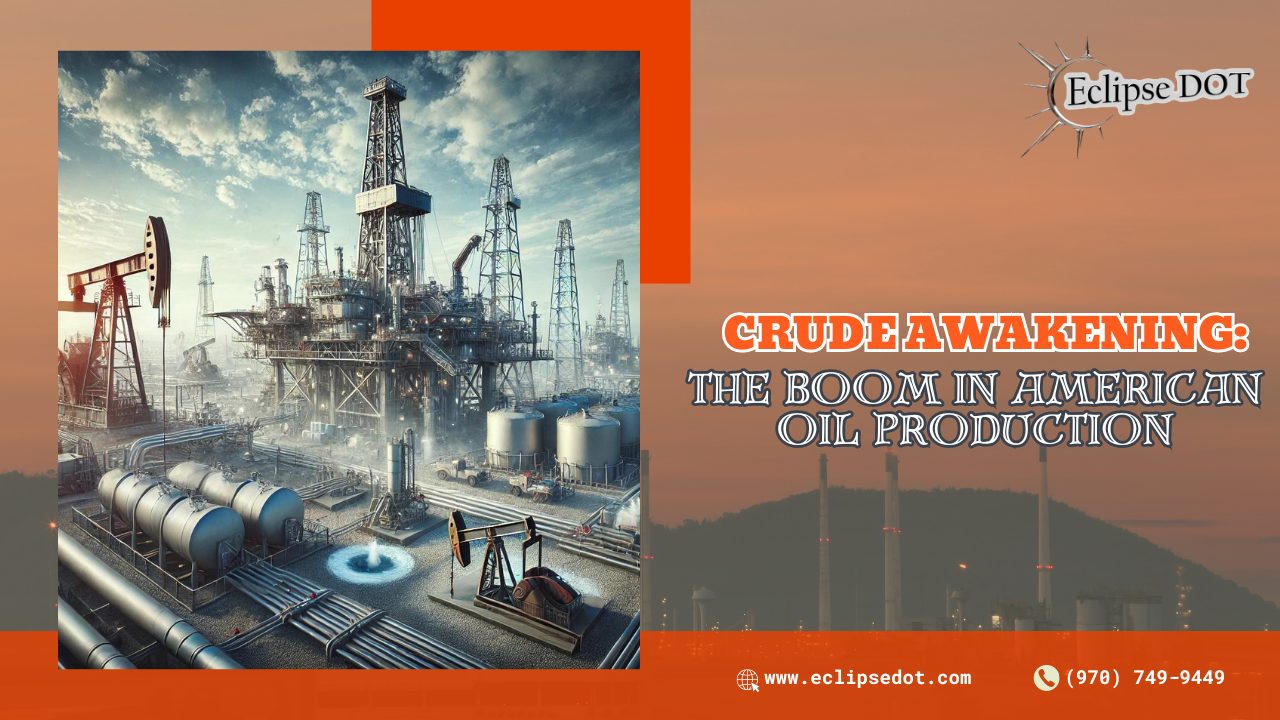Ladies and gentlemen, start your engines because the U.S. oil industry is roaring back to life with a vengeance! Despite the global drumbeat for renewables and electric vehicles, our trusty American oil producers are living it up on a tidal wave of black gold. Let’s break down why the oil industry is striking it rich and what it means for the rest of us.
The Black Gold Rush: What’s Driving It?
The American oil scene is hotter than a summer day in West Texas, pumping out more crude than ever from the region’s rich shale formations. After a tough stretch of losses from costly drilling and fracking, oil giants like Exxon Mobil and Diamondback Energy are now raking in record profits. These companies’ stock prices are soaring, reflecting a dramatic turnaround faster than you can say “Ludicrous Mode.”
So, what’s the secret ingredient in this oily recipe? It’s a blend of market forces, geopolitical tensions, and a hefty dose of resilience. U.S. oil prices have hovered around $80 a barrel since early 2021, a significant jump from the $53 average in the preceding years. The turmoil caused by Russia’s invasion of Ukraine has certainly played a part, pushing prices and profits skyward (markets.businessinsider.com) (EIA Homepage).
Slimming Down and Shaping Up
Despite the constant buzz about a green energy future, oil demand is holding strong. In response, U.S. oil companies have adopted a more disciplined approach, slimming down operations and focusing on profitability. They’ve shed excess debt, trimmed operations, and embraced automation, transforming from bloated spenders into lean, mean, money-making machines. Since 2021, oil and gas wells in the lower 48 states have generated an impressive $485 billion in free cash flow (markets.businessinsider.com) (opb).
Steve Pruett of Elevation Resources quipped, “People used to call us drunken sailors. Hopefully, we’re shaking off that reputation now.” It’s a new era of fiscal responsibility in the oil patch!
Political Chess and Climate Calculus
The resurgence in oil has been a tricky political puzzle. President Biden has been cautious in celebrating the industry’s success, balancing his climate commitments with the realities of energy demand. Meanwhile, former President Trump has largely ignored the sector’s recent wins, sticking to his narrative of the industry needing a rescue. This political limbo leaves the booming oil industry without a clear champion in Washington (opb).
On the environmental side, the increased oil production raises concerns about greenhouse gas emissions. Yet, the high oil prices are also nudging investments toward cleaner energy alternatives. As Samantha Gross from the Brookings Institution says, “We’re not going to get out of this business because supply was squeezed; we’re going to get out because demand went down.”
The Permian Power Play
The Permian Basin remains the crown jewel of American oil production. This sprawling region, covering parts of West Texas and eastern New Mexico, churns out about 6.4 million barrels of oil daily—nearly half of all U.S. production. The local economy is thriving, with packed hotels, bustling highways, and an unemployment rate of just 2.4% (EIA Homepage).
Big names like Exxon are not just sitting on their laurels; they’re doubling down. Exxon plans to ramp up its output in the Permian by 50% by 2027, a clear sign of their confidence in continued strong demand (markets.businessinsider.com) (opb).
Challenges and Concerns
However, not everything is rosy. The industry’s shift toward efficiency means fewer rigs and less business for contractors and service providers. Back in 2018, there were about 490 active rigs in the Permian; now there are around 310, even as production has ramped up. This leaner, more efficient approach has tightened belts across the sector (opb).
Meanwhile, the natural gas market is dealing with its own set of problems. An oversupply has led to negative pricing in some instances, forcing producers to pay others to take the excess gas. This glut has exacerbated frustrations with regulatory delays on new export infrastructure, which could help balance the market (markets.businessinsider.com) (opb).
Looking to the Horizon
As the presidential campaign heats up, the oil industry watches closely. Many executives prefer Republican policies, but there’s an understanding that stricter regulations under Democrats can sometimes lead to higher prices, benefiting the bottom line. It’s a complex dance, with the industry’s future hanging in the balance (markets.businessinsider.com) (opb).
The big question looming over the industry is the future of global oil demand. The International Energy Agency predicts a peak in demand before the decade’s end, driven by the rise of electric vehicles and renewable energy. However, many in the industry, including OPEC members, believe that demand will continue to grow well into the 2030s (OilPrice.com).
In Midland, optimism is palpable. Michael Oestmann, a partner at Tall City Exploration IV, remains bullish on the future: “I see long-term demand going up and supply being limited. We hope to be a player in that.”
So, as we navigate this “Crude Awakening,” the U.S. oil industry continues to be a major player on the global stage, with all eyes watching where the next twist in the tale will take us. Buckle up—this is one wild ride!
Gain exclusive access to our CDL & DOT Compliance articles with a trial at DOTDocs.com. And don’t forget to claim your FREE micro audit at THE ECLIPSE DOT MICRO AUDIT. Ready for seamless operations? Discover the difference today!


